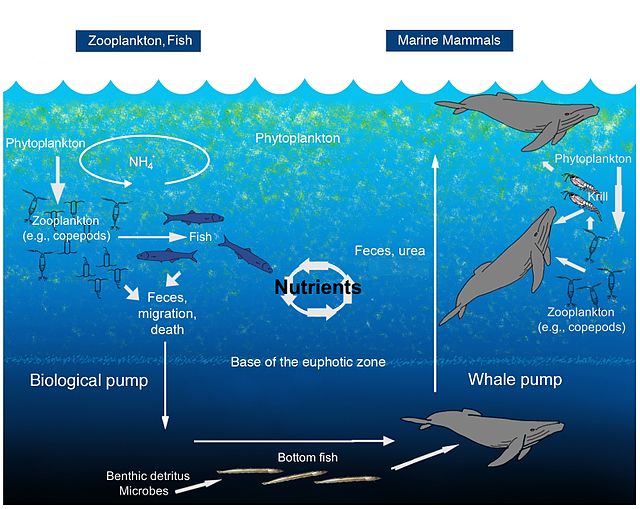The iron cycle (Fe) is the biogeochemical cycle of iron through the atmosphere, hydrosphere, biosphere and lithosphere. While Fe is highly abundant in the Earth's crust, it is less common in oxygenated surface waters. Iron is a key micronutrient in primary productivity, and a limiting nutrient in the Southern ocean, eastern equatorial Pacific, and the subarctic Pacific referred to as High-Nutrient, Low-Chlorophyll (HNLC) regions of the ocean.
Role of marine animals in the cycling of iron in the Southern Ocean
Biogeochemical cycling of dissolved iron in the surface ocean LS, strong iron binding ligand; LW, weak iron binding ligand; FeLS, iron complexed by strong iron binding ligand; FeLw, iron complexed by weak iron binding ligand; Fe(II), all sum of all Fe(II) species; Fe′, the sum of all inorganic Fe(III) species; Fecol, colloidal iron species; Fepart, iron in the particulate phase; hv, photon flux; O2, dissolved oxygen; and H2O2, dissolved hydrogen peroxide.
A biogeochemical cycle, or more generally a cycle of matter, is the movement and transformation of chemical elements and compounds between living organisms, the atmosphere, and the Earth's crust. Major biogeochemical cycles include the carbon cycle, the nitrogen cycle and the water cycle. In each cycle, the chemical element or molecule is transformed and cycled by living organisms and through various geological forms and reservoirs, including the atmosphere, the soil and the oceans. It can be thought of as the pathway by which a chemical substance cycles the biotic compartment and the abiotic compartments of Earth. The biotic compartment is the biosphere and the abiotic compartments are the atmosphere, lithosphere and hydrosphere.
Generalized biogeochemical cycle
The oceanic whale pump showing how whales cycle nutrients through the ocean water column
Beach scene simultaneously showing the atmosphere (air), hydrosphere (ocean) and lithosphere (ground)
Some roles of marine organisms in biogeochemical cycling in the Southern Ocean






